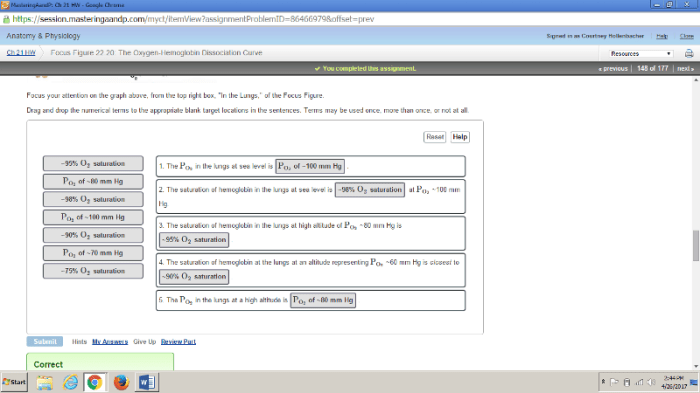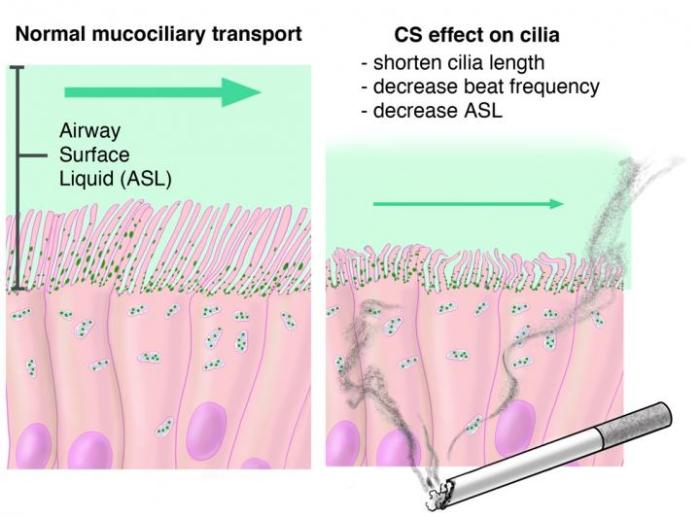Smoking diminishes ciliary action and eventually destroys the cilia – Smoking Diminishes Ciliary Action, Leading to Cilia Destruction: A Comprehensive Analysis. Smoking, a prevalent habit, poses significant risks to respiratory health, including damage to cilia, the microscopic hair-like structures lining the respiratory tract. This article delves into the impact of smoking on ciliary function, exploring the mechanisms of cilia destruction and their long-term effects on respiratory health.
Cilia play a crucial role in maintaining respiratory health by sweeping mucus and foreign particles out of the lungs. However, smoking impairs ciliary function, leading to mucus accumulation, impaired immune response, and increased susceptibility to respiratory infections.
Impact of Smoking on Ciliary Action

Smoking damages the cilia in the respiratory tract by releasing harmful chemicals that disrupt the structure and function of these delicate structures. The toxins present in cigarette smoke, such as tar and nicotine, directly interact with the cilia, impairing their ability to beat and move mucus effectively.
Mechanisms of Ciliary Dysfunction
The mechanisms involved in ciliary dysfunction due to smoking include:
- Disruption of ciliary membrane:Smoke toxins can damage the cell membrane of cilia, leading to leakage of intracellular components and disruption of normal ciliary function.
- Inhibition of ciliary beat:The toxins can interfere with the energy production and microtubule sliding mechanisms essential for ciliary beating, resulting in impaired mucus clearance.
- Reduced ciliary number:Prolonged exposure to smoke can cause a decrease in the number of cilia, further reducing the efficiency of mucus clearance.
These ciliary dysfunctions can have severe consequences for respiratory health, including increased susceptibility to respiratory infections, impaired gas exchange, and chronic respiratory diseases.
Mechanisms of Ciliary Destruction

The molecular and cellular processes leading to cilia destruction involve:
Specific Components of Cilia Targeted by Smoking
Smoking targets specific components of cilia, including:
- Dynein arms:These motor proteins are responsible for ciliary beating. Smoke toxins can disrupt the assembly and function of dynein arms, leading to impaired ciliary movement.
- Microtubules:The microtubules form the structural backbone of cilia. Smoke toxins can destabilize microtubules, affecting ciliary length and beat frequency.
- Ciliary membrane proteins:These proteins maintain the integrity of the ciliary membrane. Smoke toxins can disrupt the lipid composition and protein structure of the membrane, leading to ciliary damage.
Essential Components for Ciliary Function
These components are essential for ciliary function:
- Dynein arms:Enable ciliary beating and mucus clearance.
- Microtubules:Provide structural support and facilitate ciliary bending.
- Ciliary membrane proteins:Maintain ciliary integrity and prevent leakage of intracellular components.
Long-Term Effects of Ciliary Loss

The cumulative impact of cilia destruction due to smoking has severe consequences for respiratory function:
Irreversible Damage and Chronic Respiratory Conditions, Smoking diminishes ciliary action and eventually destroys the cilia
Prolonged cilia destruction can lead to irreversible damage to the respiratory tract, increasing the risk of chronic respiratory conditions such as:
- Chronic obstructive pulmonary disease (COPD):A progressive lung disease characterized by airflow limitation due to damaged airways and impaired mucus clearance.
- Bronchitis:Inflammation of the bronchial tubes, often caused by excessive mucus production and impaired clearance.
- Emphysema:A condition where the alveoli (air sacs in the lungs) are damaged, leading to reduced gas exchange.
Increased Risk of Respiratory Infections
Cilia loss impairs the body’s ability to clear pathogens and debris from the respiratory tract, increasing the risk of:
- Pneumonia:Infection of the lungs caused by bacteria, viruses, or fungi.
- Influenza:A respiratory infection caused by influenza viruses.
- Bronchitis:Inflammation of the bronchial tubes, often caused by viral or bacterial infections.
Implications for Respiratory Health

Cilia destruction has significant clinical implications for respiratory health:
Impaired Ciliary Function and Respiratory Diseases
Impaired ciliary function can contribute to the development and progression of respiratory diseases, including:
- COPD:Cilia destruction leads to impaired mucus clearance, airflow limitation, and emphysema.
- Bronchitis:Cilia dysfunction can lead to excessive mucus production and inflammation in the bronchial tubes.
- Asthma:Cilia impairment can contribute to airway inflammation and bronchospasm.
Early Detection and Intervention
Early detection and intervention are crucial to prevent irreversible damage and improve respiratory health:
- Ciliary function testing:Assessing ciliary function can help identify individuals at risk of respiratory diseases.
- Smoking cessation:Quitting smoking is the most effective way to protect cilia and improve respiratory health.
- Respiratory therapy:Techniques such as chest physiotherapy can help improve mucus clearance and reduce the risk of respiratory complications.
Public Health Implications: Smoking Diminishes Ciliary Action And Eventually Destroys The Cilia
The risks of smoking on ciliary damage and respiratory health have significant public health implications:
Key Points on Smoking and Ciliary Damage
| Smoking and Ciliary Damage | Consequences |
|---|---|
| Impaired ciliary function | Increased susceptibility to respiratory infections, chronic respiratory diseases, and reduced respiratory function |
| Cilia destruction | Irreversible damage to the respiratory tract, leading to chronic respiratory conditions |
| Smoking cessation | Most effective way to protect cilia and improve respiratory health |
Public Health Campaign
A comprehensive public health campaign is needed to raise awareness about:
- Risks of smoking on respiratory health:Emphasizing the impact of smoking on cilia and the potential for irreversible damage.
- Importance of smoking cessation:Promoting the benefits of quitting smoking for respiratory health and overall well-being.
- Early detection and intervention:Encouraging individuals to seek medical attention for respiratory symptoms and to undergo ciliary function testing if necessary.
Strategies to Reduce Smoking Prevalence
Effective strategies to reduce smoking prevalence include:
- Tobacco control policies:Implementing smoke-free laws, increasing tobacco taxes, and restricting tobacco advertising.
- Smoking cessation programs:Providing support and resources to help individuals quit smoking.
- Public education campaigns:Raising awareness about the harmful effects of smoking and promoting the benefits of quitting.
Frequently Asked Questions
What are cilia?
Cilia are tiny, hair-like structures that line the respiratory tract and help to remove mucus and foreign particles from the lungs.
How does smoking damage cilia?
Smoking damages cilia by impairing their function and causing inflammation in the respiratory tract.
What are the long-term effects of cilia damage?
Long-term cilia damage can lead to chronic respiratory conditions such as COPD and an increased risk of respiratory infections.